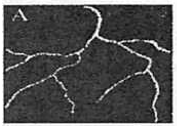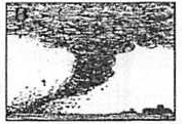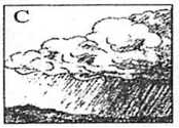Thunderstorms, with their jagged bursts of lighting and roaring thunder, are actually one of nature's primary mechanisms for transferring heat from the surface of the earth into the atmosphere. A thunderstorm starts when low-lying pockets of warm air from the surface of the earth begin to rise. The pocket of warm air float upwards through the air above that is both cooler and heavier. The rising pockets cool as their pressure decreases, and their heat is released above the condensation line through the formation of cumulus clouds.
What will happen with these clouds depends on the temperature of the atmosphere. In winter, the air temperature differential between higher and lower altitudes is not extremely great, and the temperature of the rising air mass drops more slowly. In summer, however, when there is a high accumulation of heat near the earth’s surface, in direct contrast to the considerably colder air higher up, the temperature differential between higher and lower altitudes is much more pronounced. As warm air rises in this type of environment, the temperature drops much more rapidly than it does in winter; when the temperature drops more than four degrees Fahrenheit per thousand feet of altitude, cumulus clouds aggregate into a single massive cumulonimbus cloud, or thunderhead.
In isolation, a single thunderstorm is an impressive but fairly benign way for Mother Earth to defuse trapped heat from her surface; thunderstorms, however, can appear in concert, and the resulting show, while extremely impressive, can also prove extraordinarily destructive. When there is a large-scale collision between cold air and warm air masses during the summer months, a squall line, or series of thunderheads, may develop. It is common for a squall line to begin when an advancing cold front meets up with and forces itself under a layer of warm and moist air, creating a line of thunderstorms that races forward at speeds of approximately forty miles per hour. A squall line, which can be hundreds of miles long and can contain fifty distinct thunderheads, is a magnificent force of nature with incredible potential for destruction. Within the squall line often near its southern end, can be found supercells, long-lived rotating storms of exceptional strength that serve as the source of tornadoes.
1. The topic of the passage is( ).
2. The word "mechanism" in paragraph 1 most probably means( ).
3. It can be inferred from the passage that, in summer, ( ).
4. Choose the drawing below that most closely resembles a squall line.
5. All of the following are mentioned in the passage about supercells except that they( ).



